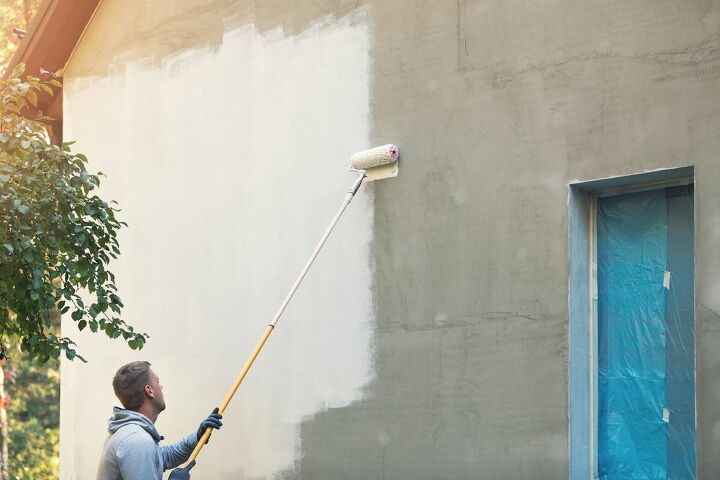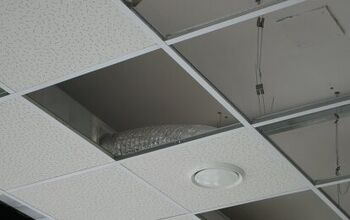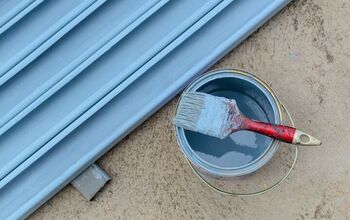How Long Can Primer Sit Before Painting?

Without primer, your paint of choice will struggle to stick to the surface and that’s why it’s as important as the paint itself. It isn’t difficult to apply primer, but it can be difficult to determine how long it takes to dry. So, how long should primer sit before painting?
The average primer must sit for 24 hours before you can paint, but some are ready within 3 hours or less. Never let a latex-based primer sit for longer than 30 days before you paint it. You can paint over some primers in as little as 1-4 hours, but it depends on the primer’s base, density, and humidity in the air.
It’s important to read your primer’s label to find out how long you can expect it to take to dry. Dry times vary based on whether the primer is oil, latex, or water-based. Follow along as we explore how long primer should sit before painting.
Do You Need Painting or Staining Services?
Get free, zero-commitment quotes from pro contractors near you.

How Long Should Primer Sit Before Painting?
A primer should sit for up to 24 hours before painting. The shortest that a primer should sit is 30 minutes before painting, but that only applies to some water or latex-based primers. It takes between 30 minutes and 4 hours for the primer to dry based on factors such as humidity and how thick the coat is.
You have to paint over primer within a specific timeframe or it may lose the adhesive quality. That will prevent the paint from sticking to the surface well and it won’t look good. The three main types of primer are oil-based, latex-based, and water-based primers.
Primers vary when it comes to dry times and how long you have to paint over them before they go bad. The base is the biggest decider in how long a primer takes to dry and how long you have to paint over it.
Latex
Latex primers are affordable, easy to apply, and dry quickly. The average latex primer dries within 30 minutes, but it can take up to 1 hour to dry completely. Dry times vary between brands and based on the air conditions.
The versatility that latex primers offer is their main appeal, and they are ideal for several types of surfaces between soft wood and concrete. You have a 21-day time window to paint over a latex-based primer before it loses its efficacy. However, it is ideal to paint over a latex-based primer well before then to play it safe and shoot for 7-14 days.
Oil
Oil-based primers can sit for 14 days before painting, and they take the longest to dry compared to other bases. It’s important to respect the short time window and paint over an oil-based primer before it’s too late. An oil-based primer can take 8 hours to dry or longer depending on the temperature, humidity, and density of the coat.
The main benefit of oil-based primers is that they can seal porous surfaces and make them easier to paint. Oil-based primers are so strong that you can even put an oil-based primer over a water-based primer. Always allow between 8 and 24 hours before painting over an oil based-primer so that the interior or exterior surface is ready.
Water
You can expect a water-based primer to dry between 30 and 60 minutes. It still takes another 2-3 hours for a water-based primer to fully cure. Professionals typically recommend painting over a water-based primer within 72 hours of applying the base coat.
You can paint over some water-based primers within a week in some cases, but it’s ideal to act right away. Water-based primers are similar to latex-based primers in that they dry and cure quickly. Try to paint over a water-based primer within 1-3 days so that the first coat of paint can easily adhere to the surface.
What is the Best Type of Primer?
Latex-based primers are the best for their fast dry time and adhesive quality. You have a generous 21-day window before you need to paint over a latex primer which makes them easy to work with. This gives you plenty of time to settle on a color and let each coat of paint dry.
However, you may benefit more from an oil-based primer if you need to work with wood or metal. You can also easily cover a stain with an oil-based primer, even if you previously used a water-based primer. There are good and bad primers with oil, water, and latex bases that vary based on the brand that you choose.
Choose a water-based primer if you are in a pinch and want something that dries quickly and is easy to work with. However, you can never go wrong with a latex-based primer unless you are working with old wood. Old wood can swell slightly when you apply a latex-based primer in some cases, and that is when oil or water is better.
What Happens if You Wait Too Long to Paint Over Primer?
Your paint may wrinkle or fail to adhere to the surface if you wait too long to paint over the primer. A primer can slowly lose its adhesiveness nature the longer that you wait to apply a coat of paint. Each primer has a different dry time and window before you can paint over it.
Refer to the label on the can of primer to make sure that you paint the first coat within the proper timeframe. Dust, dirt, and debris can stick to the wall and make the paint stick to the surface inconsistently. The biggest concern is that there will be bare spaces, blotches, and wrinkles on the surface if you wait too long to paint over it.
What About Self-Priming Paint?
If you don’t want to work with primer, there’s another option you can use: self-priming paint. This is paint that is slightly thicker than your typical paint and can therefore be applied without the use of a primed base. Though it can work with most surfaces, the results can be spotty on very porous surfaces as well as ultra-high gloss surfaces.
Since it has a reputation for being a “hit or miss” deal, most professional painters prefer to stick to primer and regular paint. It tends to look better, has more predictable results, and also stay on better than self-primer. That being said, the option is still there if you want to get a quick fix underway.
Of course, if you use self-priming paint, you still will need a clean surface. So, don’t think that it absolves you entirely of your need to keep things prepped.
Related Questions
Can I paint over primer the same day?
You can paint over primer the same day as long as it is dry. Some primers can be dry in 30-90 minutes depending on air conditions and primer that you use. Oil-based primers take longer to dry than water-based and latex-based primers.
Does primer need to be even?
You don’t need to apply primer completely evenly, but you should cover the surface as much as possible. Paint won’t adhere to the surface well in spots where there is no primer. Spots without primer may produce weak spots in your paint and it can turn out blotchy.
Can you paint two coats in one day?
You can paint two coats in one day with a water-based paint or primer after an average of 4 hours. However, you may have to wait 3-5 hours or more to recoat a water-based paint depending on how quickly it dries. Oil-based paints and primers require up to 24 hours and you can typically only apply one coat per day.
Summing It Up
It is ideal to let a primer sit for at least 24 hours before painting. However, you can generally paint over water or latex-based primer within 3 hours of applying the base coat. You can let a latex-based primer sit for up to 21 days before you paint over it and retain the adhesive nature.
However, you should only let a water-based primer sit for 3 days before you paint over it. Oil-based primers have a 14-day time window before you need to paint over them. You can expect an oil-based primer to take at least 8 hours to dry, but you’ll need to allow 3 extra hours for it to cure.
Related Guides

Ossiana Tepfenhart is an expert writer, focusing on interior design and general home tips. Writing is her life, and it's what she does best. Her interests include art and real estate investments.
More by Ossiana Tepfenhart














![10 Best Zero Turn Mowers – [2022 Reviews & Ultimate Buyer's Guide]](https://cdn-fastly.upgradedhome.com/media/2023/07/31/9070522/10-best-zero-turn-mowers-2022-reviews-ultimate-buyer-s-guide.jpg?size=350x220)








![How To Reset A Whirlpool Cabrio Washer [In 5 Easy Steps!]](https://cdn-fastly.upgradedhome.com/media/2023/07/31/9076531/how-to-reset-a-whirlpool-cabrio-washer-in-5-easy-steps.jpg?size=350x220)



